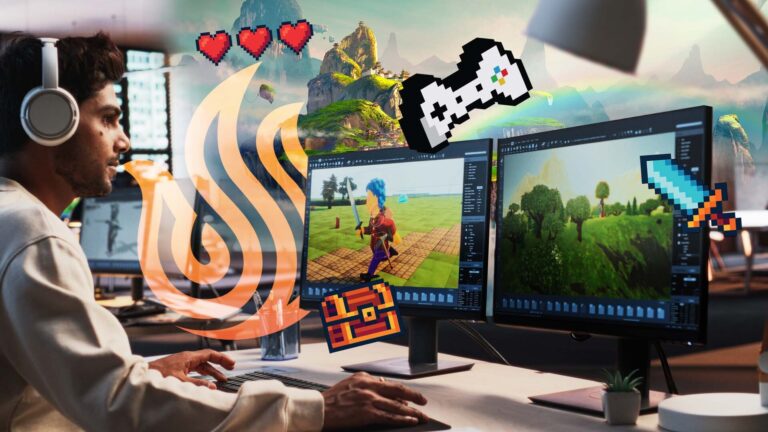An animator is responsible for producing designs for images called frames. When multiple frames are sequenced together, it creates the illusion of movement. This illusion is what is known as animation. Images can be made up of various mediums such as digital paint, hand-drawn, stop-motion, 3D, 2D and computer-generated. These types of career paths call for high-level passion and creativity. The basic skill of animation still relies heavily on artistic ability, but there is an increasing need for animators to be familiar with technical computer packages.

Animated sequences are involved in nearly every aspect of your life, whether it was cartoons as a child, or current day advertisements and billboard displays. Animators typically work as part of a team with a specific specialization. One part of the team can be working on characters, scenes, or sequences; and the others assemble all of these pieces into a coherent whole. “Large picture” animators focus on scripting and planning to execute big projects. Commercial Advertising and cartoons provide most of the animation jobs (of which more than 20 percent have animated sequences). Film festivals and competitions have grown in popularity and relevance over the past 10 years. Many would say that it is considered a wright of passage. Many independent production companies recruit funds to develop their animated products. Some of these independently funded products include sample shorts, digital series’, foreign markets or animation festivals.
What to expect:
- Animation is primarily an office or studio-based profession. Some experienced freelancers have studio equipment set up at home.
- Working hours – Working hours are regular office hours (approximately 40 hours per week), but as deadlines approach Flexi-Time kicks in and you will be working overtime, including weekends.
- The Animation Guildreported an increase the percentage of its members who are women, which account for 25.6 percent of its 4,230 writers, artists and technicians at studios under its jurisdiction in and around Los Angeles in March of 2019.6
- Most animation jobs are located in California, New York, Washington, Texas, and Georgia. Specifically, Los Angeles, New York, San Francisco, Seattle, Chicago, and Atlanta are the top cities for animation careers.7
You’ll need to show:
- artistic talent and technical skills
- attention to detail
- good communication
- storytelling skills
- ability to work independently and well with others
- networking skills
- industry engagement
- volunteer projects
- the flexibility to multitask projects
Qualifications:
Although this area of work is open to all graduates, the following degree or foundation degree subjects are particularly relevant:
- animation
- art and design
- computer science
- Game Design & Development
- graphic design/illustration
- model making or sculpture
- motion graphic design
- 3D modeling.
Tasks typically involve:
- liaising with clients and developing animation from their concepts
- creating storyboards that depict the script and narrative
- drawing in 2D to create sketches, artwork or illustrations
- designing models, backgrounds, sets, characters, objects, and the animation environment
- using materials including modeling clay, plaster, oil paints, and acrylics
- developing the pace and timing of objects and character movements to follow the score and sound fx.
- using technical software packages, such as Flash, 3ds Max, Maya, and Cinema 4D
- building detailed, frame-by-frame visuals
- recording dialogue (backgrounds, special effects) to produce the finished piece
- working to client’s production deadlines.
- working as part of a broader production team, which might include liaising with printers, copywriters, photographers, designers, account executives, website designers or marketing
Paying Your Dues
It is extremely difficult to achieve the level of professionalism expected in this industry without study. A bachelor’s or graduate degree in graphic design from schools like University of Silicon Valley with an emphasis on computer skills is extremely helpful in getting interviews or portfolio reviews. Most important for an aspiring animator is that your work is of exceptional quality, and to that end, many aspiring animators intern or work for little pay to learn the craft from established animators, game designers, and programmers. As with most creative fine arts fields, the number of people wanting to become animators exceeds the demand; therefore, open positions are competitive. The rate of success in the field is low, but those who do achieve it are extremely satisfied.
Career prospects
Most animators begin as studio runners and then progress to junior animation roles.
In 2D animation, you may begin work as an ‘inbetweener’, then progress to a key framer.
3D animation has a more hierarchical structure. Starting as a junior animator, you’ll progress to senior animator after a few years’ experiences and finally reach the design manager or art director level.
Senior roles involve more paperwork, managing staff and generating new ideas. Career progression is usually through freelance work, which develops the animator’s reputation, and this is likely to ensure a regular supply of work as well as more senior responsibilities.
USA is the home to some of the largest animation, CGI special effects and game studios. The main hubs of the animation industry in the U.S are the cities of Los Angeles, New York, San Francisco, and Atlanta.
In terms of development, versatility is the key and if you can work with puppets, models and drawn and computer-generated animation, you may find more options open to you.
Did learning about what a computer programmer does interest you? University of Silicon Valley offers comprehensive Computer Science & Engineering degree programs taught by entrepreneurs who are in the thick of the industry. In this project-intensive Software Engineering concentration, you’ll not only cover the fundamental concepts of the software development process, but you’ll explore the different ways that complex software systems are changing the world.
University of Silicon Valley is uniquely poised to offer a meaningful and valuable education for 21st century students. We believe in an education that directly correlates with the work you’ll be doing after you graduate. Interested in learning more? Contact Us today.


